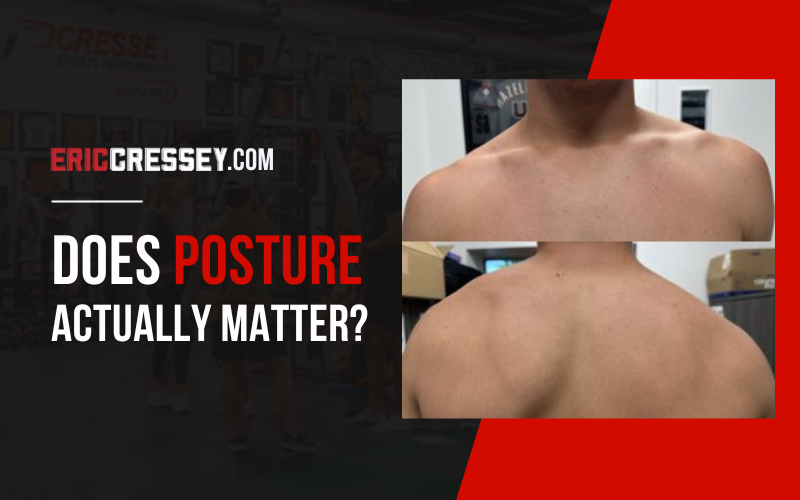When you hear “core training,” the first thing that most likely comes to mind is sit-ups, crunches, and six-pack abs. Yes, that is part of the equation, but a strong core goes beyond that. Believe it or not, your lower back is also part of your core.
Anti-extension exercises are one of the most important yet overlooked aspects of core training. Anti-extension training can help prevent your lower back from overarching, which is vital for preventing injury.
In this article, we’ll examine anti-extension, muscles worked, benefits, and our favorite anti-extension exercises plus how to incorporate them into your training regimen for a bulletproof core.
What Is Anti-Extension?
As mentioned briefly above, anti-extension is your core’s ability to resist excessive arching (extension) of your lumbar spine (lower back). Have you ever got into a push-up position and your hips sagged down? That’s considered extension. Anti-extension muscles allow you to keep your hips in a straight line with the rest of your body. Maintaining a neutral spine helps prevent possible injury, especially when it comes to other exercises with heavy loads like overhead presses and deadlifts.
Anti-Extension Core Muscles Worked
While the main goal might be to prevent back injury, your ab muscles are also heavily involved. Let’s take a look at all the muscles that contribute to keeping your spine happy:
- Rectus Abdominis: The front abdominal muscles, aka the six-pack, are responsible for flexing the spine and resisting extension.
- Transverse Abdominis: While you might not see this muscle, it wraps around your spine, maintaining abdominal pressure and acting like a natural weight belt.
- Obliques: While more known for their role in rotation, the obliques also help resist extension.
- Erector Spinae: These muscles run along your spine from your sacrum to the skull and are responsible for extending the back. They also work in tandem with the core to prevent hyperextension.
- Glutes: The largest muscles in the body, a strong set of glutes helps stabilize the pelvis, which in turn supports a neutral spine position.
5 Best Anti-Extension Core Exercises
Here are some of the most effective anti-extension exercises to include in your routine:
1. Planks (all variations)
How could we not include this one? For an exercise without movement, planks are one of the best ways to increase core strength, and it will make 60 seconds feel like 60 minutes.
2. Ab Wheel Rollout
This introduces some dynamism into the mix. Having your arms extended out overhead puts your core into overdrive to keep your hips from sagging.
3. Dead Bug
At first glance, the dead bug exercise not seem like an anti-extension exercise until you actually try it. Keeping your back flat with an arm and leg extended is more difficult than you might think.
4. Stir-the-Pot
Technically, it’s a variation of a plank, but we felt it was different enough to include here. Moving your arms in a circular motion keeps your entire core engaged, forcing it to adapt to the almost constant instability.
5. Hollow Body Hold
By extending your arms and legs so you look like a banana, you’ll have to use every bit of strength to avoid extending your back and causing your extremities to fall.
5 Tips To Incorporate Anti-Extension Core Exercises Into Your Workout Regimen
Here are 5 tips to make the most of anti-extension exercises:
1. Warm-Up
That’s exactly what it should be. A warm-up. Doing some short, and I mean short, sets of planks before starting your workout can help fire up your core and get you primed to move some weight.
2. Perform After Compound Movements
If you plan on deadlifting, the last thing you want to do before your sets is pre-exhaust your core. Doing serious core work first is just asking for trouble. The same could be said for other movements, such as bent-over rows or overhead presses.
During compound movements, your core will get a good workout in itself. It’s better to do direct core work afterward, preferably at the end of the workout.
3. Core-Focused Days
If you’re serious about taking care of your core, you need to include a core-focused day. That doesn’t mean you need to do abs for three hours straight, but instead of doing your fifth biceps exercise, dedicate that time to core work. We recommend including 2-3 anti-extension exercises for 3-4 sets each every week.
4. Progression
Just like any exercise, you’ll eventually need to increase your effort to see improved results. That can mean adding an extra set, adding weight, trying a variation, or adding time (the world record for the plank is 9 hours, 38 minutes, and 47 seconds, so there’s something to shoot for).
5. Recovery
Possibly the most important tip on here. Your abs and core are just like any other muscle in the body. They need time to recover to grow back stronger. Stretching, foam rolling, and leaving enough time between training sessions can help avoid overtraining or injury.
4 Benefits of Anti-Extension Core Exercises
By this point, I’m sure you can see why anti-extension core training is essential for your overall health, but let’s cover some reasons you might not have known about:
1. Injury Prevention
A hurt lower back is one of the most common injuries that take people out of the gym. While we can’t guarantee you’ll never have another lower back injury, you’re certainly reducing the risk by strengthening the muscles that help resist spinal extension. If you are even entertaining the idea of deadlifting, you need to be doing some sort of anti-extension training.
2. Improved Performance
A stable core is one of the most important aspects on the field and in the weight room. If you want to be able to squat a small car, you need to be able to keep a neutral spine under heavy weight. A strong core also means greater power generation.
3. Better Posture
Posture. Just reading that word most likely made you sit up a little straighter. But posture goes beyond just your upper back. It also goes down to your lower back. Strengthening all the muscles involved with anti-extension can help prevent the dreaded anterior pelvic tilt.
4. Functional Strength
This training can also help outside the gym, improving balance and making everyday activities easier like lifting groceries or your kids.
Wrap-Up
Anti-extension exercises are a crucial yet overlooked part of a comprehensive fitness routine. By integrating these exercises into your regimen, you’ll not only build a stronger, healthier core but also reduce the risk of injury and improve athletic performance. The exercises above are by no means a definitive list, but they are a great place to start, and your lower back will thank you.



